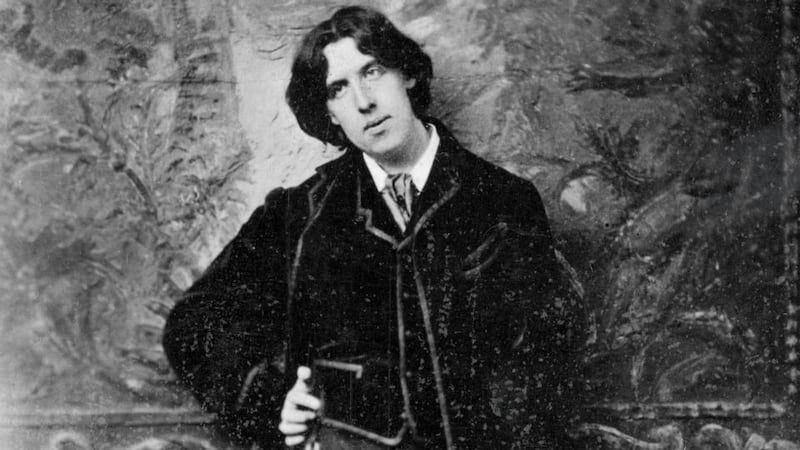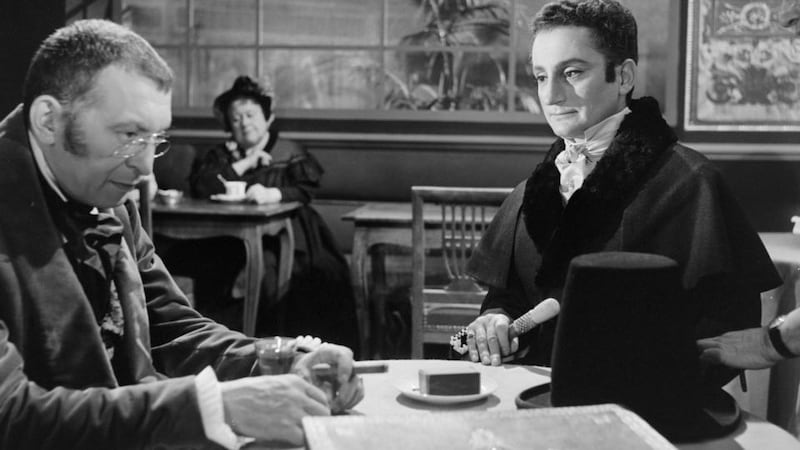Readers of the Quarterly Review in 1821 were warned that a certain "unhappy patient" had exceeded his past "ravings" in the "folly and indelicacy" of his third novel, Melmoth the Wanderer. Resorting to capitals to convey the depth of his outrage, the reviewer spoke of the novel's "BLASPHEMY", "BRUTALITY" and "OBSCENITY", delineating at length all the ways in which the writer had revolted against social propriety, proper religious feeling and artistic integrity. "If Melmoth had only been silly and tiresome," he wrote, "we should gladly have treated it with silent contempt; but it unfortunately variegates its stupidity with some characteristics of a more disgusting kind."
The author who occasioned this response was the Rev Charles Maturin, the Protestant vicar of the Galway town of Loughrea. He was fond of dancing, despite being of a Calvinist bent; his sermons were heartfelt, compassionate and much admired; though he was finely dressed in public, a visitor to his home might well encounter him in rags. His life was one of financial calamity: his father had been dismissed from his post office employment on suspicion of corruption, leaving Charles to bear the financial burden of the family, not least those of his bankrupt brother, while the church – viewing Maturin's early efforts as a novelist with disfavour – barred him from advancement, so that he was reliant on a miserly stipend. The success of an 1816 play, Bertram, which starred Edmund Kean and earned Maturin no less than £1,000, was all too brief: the money was swallowed up in debt, and the play itself moved Samuel Taylor Coleridge to observe that its popularity was little but "melancholy proof of the depravation of the public mind".
It was under these circumstances that Maturin wrote what is one of the crowning achievements of the Gothic, and a novel which few can rival for complexity, cunning and horror. On the one hand he was motivated by a grinding poverty from which there seemed no escape, and peevishly prefaced the novel with a declaration that he could not “appear before the public in so unseemly a character as that of a writer of romances” without “regretting the necessity” that compelled him to it. On the other, he held a mischievous desire to push the Gothic novel to the furthest extent of imagination and excess. In a letter to Sir Walter Scott – an admirer who wrote of his friend’s ability to excite “a very deep though painful interest” in the reader – Maturin declared that he would “out-Herod all the Herods”, plainly stating his ambition to plumb greater depths of transgression and sensation than any novelist before him.
Baroque parade
It is doubtful that Herod himself could have summoned up the baroque parade of physical horrors and mental shocks that constitute Melmoth the Wanderer. I came to it as a seasoned reader of Gothic and horror fiction, well-versed in historical and biblical atrocities, my imagination enlarged and my constitution hardened by a diet of Stephen King, Mary Shelley, James Herbert and James Hogg. Nonetheless I often found myself so appalled by its contents that on occasion I pressed my hand to the page to cover the words, like a child viewing a film through her fingers. It opens with the young John Melmoth, an impecunious student of Trinity College Dublin, attending his dying uncle in his disintegrating home. Here he encounters, by dim lamplight, the portrait of an ancestor, with eyes "such as one feels they wish they had never seen". John's uncle explains that here is a distant relation, long-vanished, who ought to be dead, but who still lives. Gradually the bewildered young man begins to comprehend that this ancestor has, by some mysterious pact, sold his soul to the devil for immortality, and that he has since roamed the earth for 150 years, seeking someone to take his place, earning the name of Melmoth the Wanderer.

What follows is a novel whose complexity of structure, embedded tales withintales, “dissolved, obliterated, muddled” manuscripts and maddened narrators resembles nothing so much as the labyrinthine crypt beneath a Gothic edifice (and, like anyone lost in the passages of a crypt, readers may find themselves longing for more light). Melmoth’s malign presence is traced through the narratives of a shipwrecked Spanish sailor, of doomed lovers, of a young monk at the mercy of the Spanish Inquisition; he is “for ever exploring the madhouse, the jail, or the Inquisition, – the den of famine, the dungeon of crime, or the deathbed of despair”.
Gradually the bewildered young man begins to comprehend that this ancestor has sold his soul to the devil for immortality and has since roamed the earth for 150 years
He is the descendent of the Wandering Jew, a legend which began in the 13th century and made its way across Europe; in that legend a cobbler was said to have tossed a shoe at Christ as he laboured beneath the cross on the way to Calvary, and has ever since wandered the earth seeking redemption for his sin. Melmoth is a creature of apparently irreconcilable contradictions: absolutely human in his misery and desperate longing for freedom from the devil’s bargain, but supernatural and satanic in his powers, persuasiveness and rage. He is repellent in his wickedness, but there is a terrible seductive quality to him: when the innocent and childlike Immalee, whom Melmoth loves and therefore destroys, declares “Wed me by this light, and I will be yours forever!”, the reader may well pause to wonder if they, too, might have surrendered to Melmoth’s violent longing.
Grimly funny
Maturin spares the reader no detail of human suffering, both physical and psychological: to read the novel is to be, like Immalee, degraded by a pitiless display of man’s inhumanity to man. Which is not to say Maturin is either humourless or amoral. On the contrary, the novel is grimly funny – Melmoth himself is much given to laughter, and the novel’s excesses are often described with a kind of deadpan detachment that gives the reader permission to grin with disbelief as much as grimace in distaste (the scene in which an immured man, insane with hunger, takes a bite from his lover’s shoulder and finally from his own hand, is so appalling as to be very funny indeed). And it is vigorously, even bitterly moral, as must be expected from a preacher who instructed his congregation to consider the plight of Ireland’s poor and acknowledge: “Are you not answerable for this?” The righteous indignation of its satire on organised religion generally and Catholicism in particular is palpable, as is its condemnation of the political and financial practices that left such a significant proportion of the Irish population in abject poverty. Like Melmoth himself, the novel is composed of a thousand contradictions, as the unstoppable force of Maturin’s Gothic imagination meets the immovable object of history – it is ridiculous, gleefully and consciously so, but it is also deeply serious, and a profound commentary on personal, religious and political transgression. Cunningly, Maturin elides the border between fact and fiction: the novel is peppered with footnotes attesting to the veracity of certain episodes, such as that of the pauper whose son sells his blood to surgeons to keep the family from starvation (“Fact: it occurred in a French family not many years ago”).

It is not possible to understand Melmoth the Wanderer, nor to account for its power, without considering the nature of the Gothic. Few literary conventions are as subject to analysis and misinterpretation, perhaps because its nature lies not in the deployment of certain tropes and motifs, but in evoking and exploiting a particular kind of feeling. The Gothic is not a genre so much as a sensation, and it is telling that deep within one of Melmoth's tales there is the line, italicised for emphasis, "emotions are my events". Because it is not the torture, madness, misery and suffering that constitute the great events of this novel, and of all Gothic fiction at its most effective, but the emotions experienced by the reader. Gothic feeling is that sensation of being deliciously caught between repulsion and attraction, unable to distinguish between a feeling of censure or pleasure at acts of transgression. As Edmund Burke says, it is the sublime, since "whatever is in any sort terrible, or is conversant about terrible objects, or operates in a manner analogous to terror, is a source of the sublime". A writer may pepper a novel with as many manuscripts and candlesticks as they please, and send half a dozen maidens in nightgowns running down half a dozen subterranean passages, but unless the reader finds themselves as bewildered, appalled and pleasantly corrupted as the characters between the pages, the Gothic is not truly present.
Disruptive and transgressive
Maturin died four years after the publication of his masterpiece, having achieved neither fame nor financial security. He was 42. Melmoth the Wanderer met with greater success in France than elsewhere, and it is telling that so disruptive and transgressive a figure found welcome in a nation that had undergone a traumatic upheaval of political, social and religious norms. Balzac resurrected Melmoth in his novel Melmoth Reconciled, in which the Wanderer strikes a bargain with a banker, and Baudelaire wrote at length of the quality of Melmoth's devilish laughter, "the necessary resultant of his own double nature, which is infinitely great in relation to man, and infinitely vile and base in relation to absolute Truth and Justice". If Melmoth failed to achieve the ubiquity of other titular monsters – Dracula, Frankenstein, Dr Jekyll and Mr Hyde – none theless the name echoes on, persistently, the Wanderer not yet at rest. Oscar Wilde, a greatnephew of Maturin's by marriage, called himself Sebastian Melmoth on his release from jail; Nabokov's Humbert Humbert named his blue car Melmoth; the Cerebus series of graphic novels includes a volume entitled Melmoth and features a character modelled on an ageing and dissipated Wilde. Some years after first reading Maturin, I found I could no longer ignore the indistinct female figure that seemed always to be watching me with an intent and unblinking gaze; and in due course found that I knew her name, and that she, too, was Melmoth; and so I sat down to write. In this way the impoverished Irish vicar's legacy persists, and Melmoth goes on wandering, arousing in readers that sensation which is most purely and most dangerously Gothic: pity and contempt for ourselves, and sympathy for the devil.
Melmoth the Wanderer 1820 by Charles Robert Maturin, with an introduction by Sarah Perry, is published on October 2nd by Serpent’s Tail, as is Melmoth, Perry’s new novel, inspired by the original

















